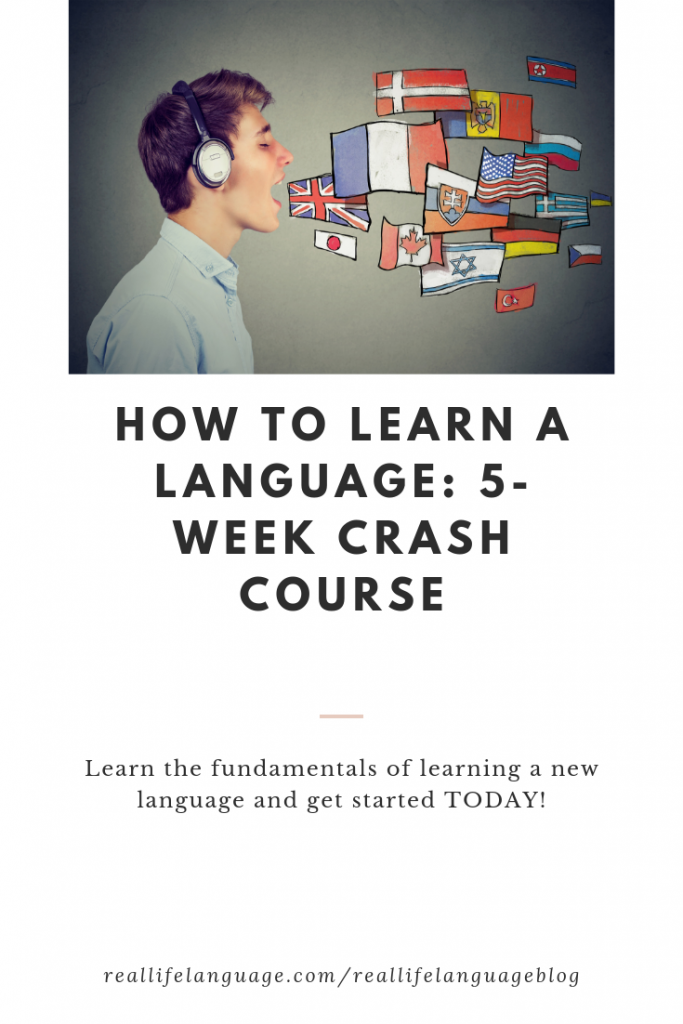Week Five: Putting it all Together

Week 5: Putting it all Together
How to learn a language: 5-week Crash Course
When thinking about how to a learn a language, we generally talk about four skills: listening, speaking, reading and writing.
Generally speaking, these four skills have an order in which they develop. We first listen, then speak. We read and then we write. As a young language teacher, I was asked to equally assess these four different skills. This was something I really struggled with because it didn’t make sense to me to separate these skills. While they are separate skills, they’re often practiced in an integrated way. In a simple conversation, we listen and we speak. Usually what is said will be based on what the other person has said.
The order of skill acquisition is very similar to how we first learn a language. We weren’t suddenly writing five-page papers. We started with understanding first. We then begin to learn how to read, which is learning what the words we say look like. We then learn how to write.
As you learned these skills, each enhances the rest. For example, as we learn how to read, we often learn how to write. As we learn how to write with the very first activity of copying, we were learning how to read better. Essentially, the process is not entirely linear. We don’t learn the entire alphabet before learning the sounds letters make and the names of the letters before we learn to read. All sorts of things are happening at the same time as you progress towards literacy. All the language you understood became language you learned how to produce.
We continue to learn how to read until we are proficient enough to be able to read to learn. When you can read, you can learn anything. You can do this on your own terms, in your own time.
ACTFL, the American Council for the Teaching of Foreign Languages has defined some different modes of communication that are much more appropriate to what we’re actually doing in our language classes.
ACTFL defines the three modes of communication:
- Interpersonal- this is communication between people.
- Presentational- one person is communicating.
- Interpretative- where we’re understanding.
Obviously, the interpersonal would be a conversation that’s going back and forth. Presentational could be one person speaking or writing. Interpretative is understanding what we’re listening to and reading.
Just as we talked about our experiences in learning our own language, we also see how using these modes together can accelerate your progress to help mimic that natural learning environment. Some examples from real life that perhaps you can relate to of integrating skills:
- Reading a book and being part of a book club where you discuss the book.
- Reading a letter, reading a newspaper article, and writing a letter to the editor.
- Watching the news or a film and talking about it.
- Simply having a conversation.
ACTFL suggests that teachers create IPAs or Integrated Performance Assessments. Just like in real life, learners are practicing and performing across different modes of communication.
Thinking like this is the way to speed up your progress. While it’s important and vital to develop all of the modes and skills (and especially important when you are studying independently) consider trying to integrate your skills as often as possible.
I think the best example that’s widely available to see is Benny Lewis. He’s constantly integrating his skills. He gets speaking to native speakers. He listens and reads what they say on Skype. And he keeps doing these cycles over and over as his skills build- input, output, input, output. That’s the secret to speeding up your progress.
While you want to take advantage of all of your time that realistically fits into your life and that enjoyably fits into your life in learning languages, consider integration of skills and doing that as often as you can. Some examples:
- Reading a magazine that has interactive quizzes.
- Reading and writing in your journal to react to it.
- Doing crossword puzzles in the target language. That requires you to problem solve, read and write.
- Anything that you read or write- it could be a film, a newspaper article, a news broadcast- bullet point out a reaction to it and record yourself talking about those points. Those recordings will serve as documentation of your rapid progress.
- Probably one of the most effective ways to get started on that at home is find somebody to talk to. You’ll be integrating your skills all the time.
One place I like to start, because I’m not as gutsy as Benny, is with beginning level materials and make my own phrase books. You can also do this as task notebooks. A task is something that you can do in a language. I like to start by writing out all the words and vocabulary that I’m going to need to be able to complete that task. For example, ordering in a restaurant. I can then take those words and phrases as I’m reading them and write them down in a form of a dialogue. Then practice both sides of the dialogue on my own. I test myself by writing out in short little, bullet point prompts what’s being said.
I share this example with you because it’s one way to be able to integrate different skills. I read, I wrote, and I spoke, all in that one activity. When you add another person to do this dialogue with, you’ve added listening into that too. This is just one example of the infinite ways that you can integrate yourself if you study a language.
Looking for more ways to build your language skills? Click here.